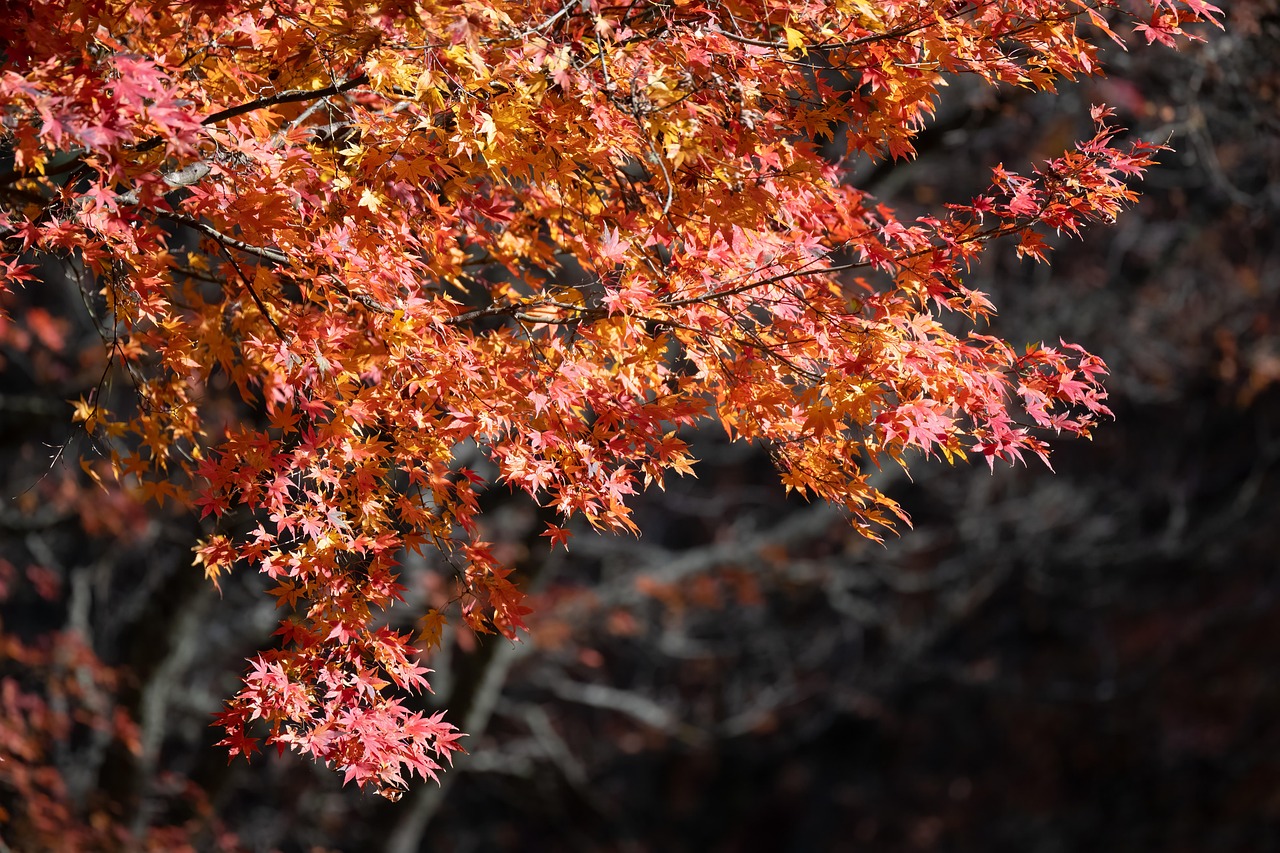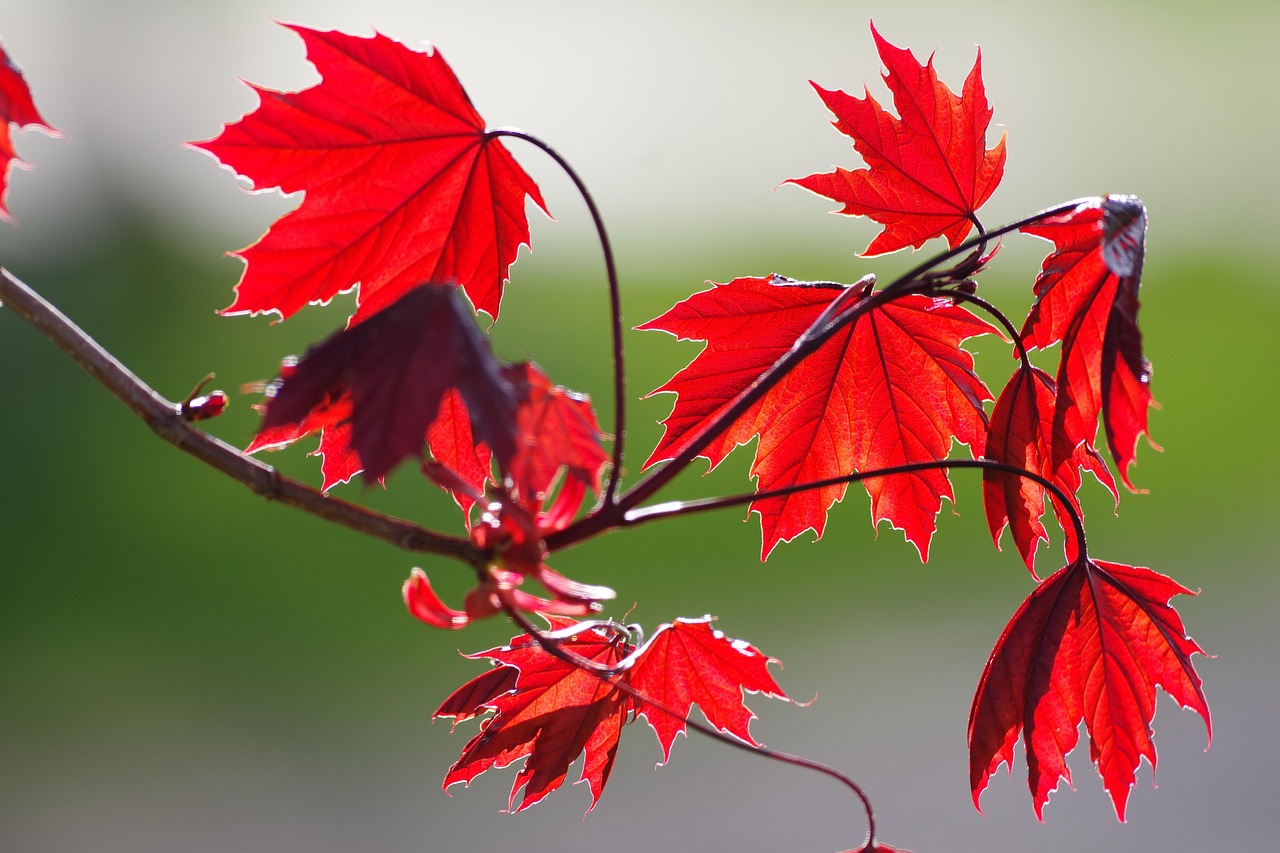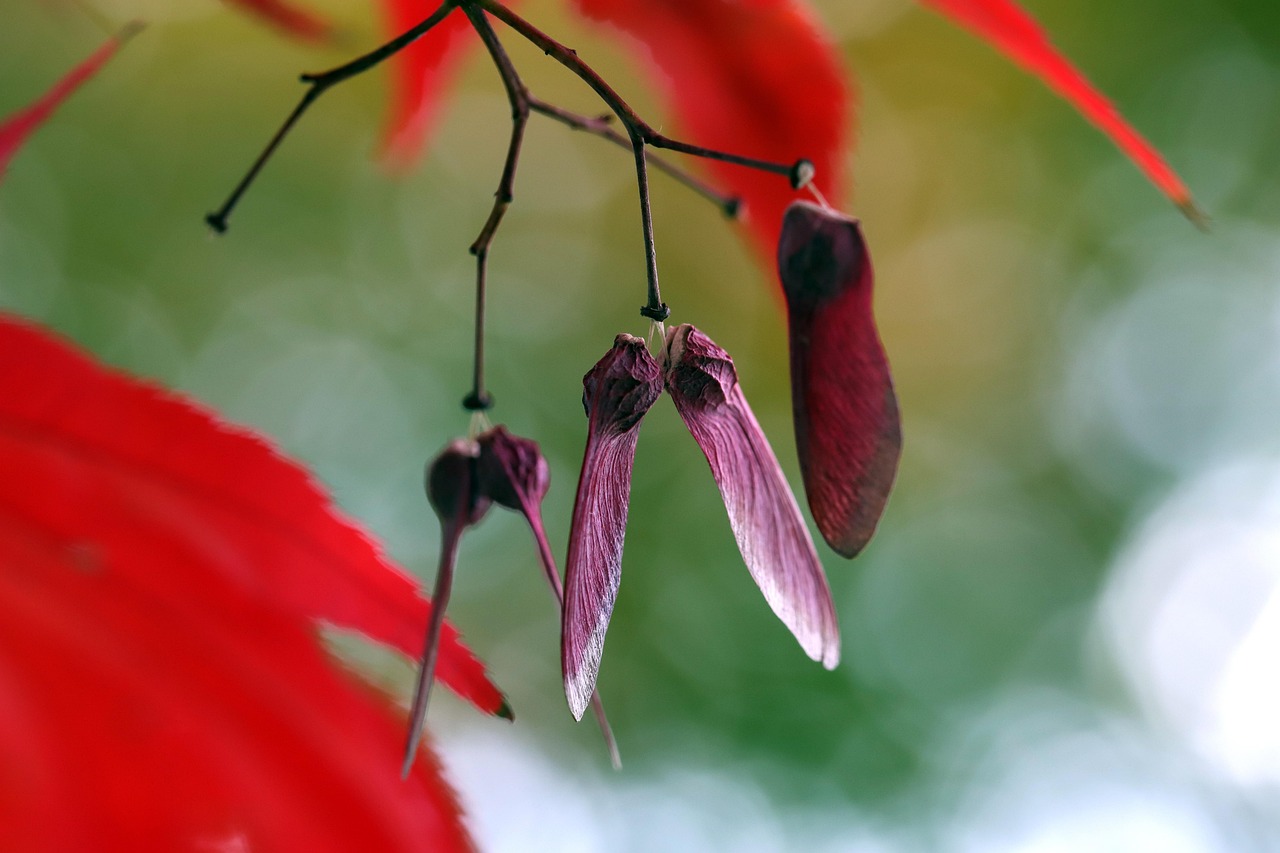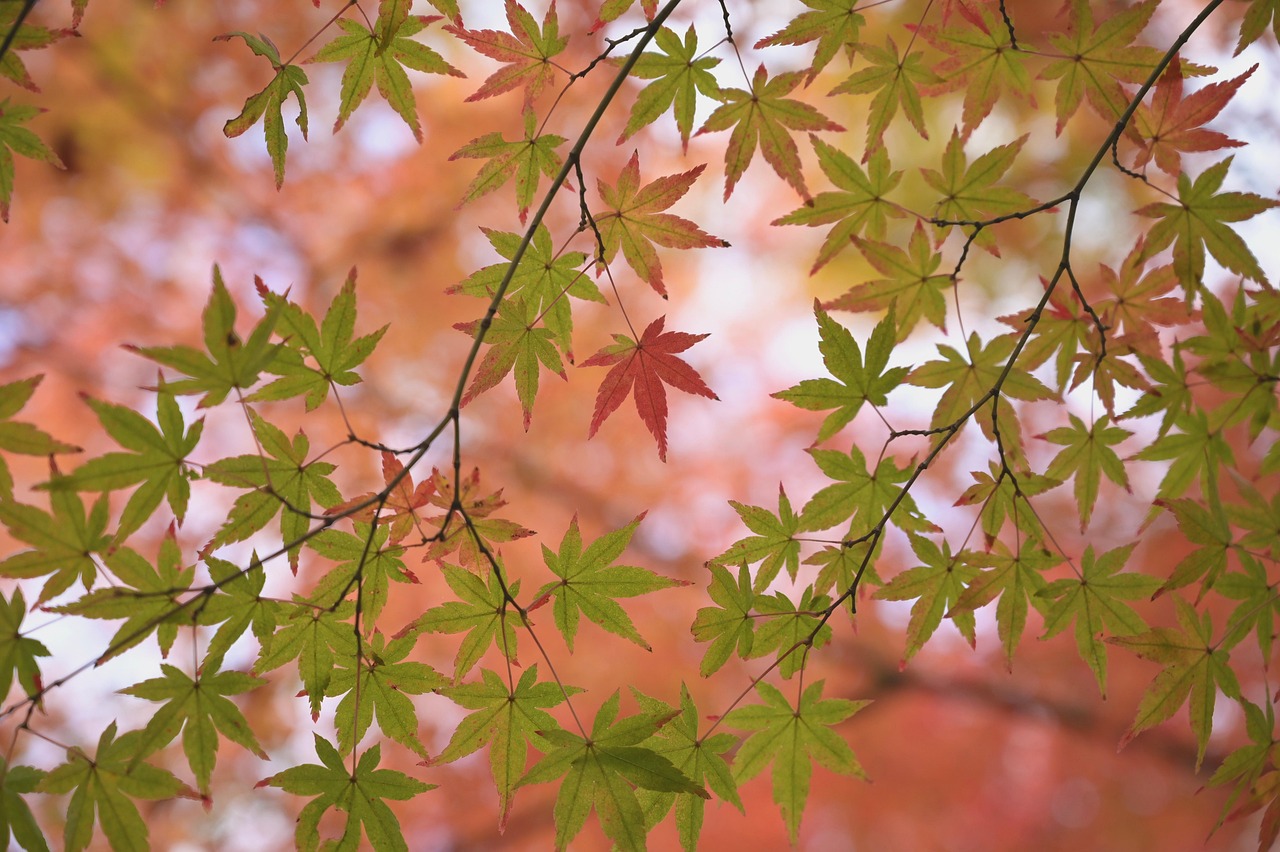Yes, red maple trees (Acer rubrum) are considered fast-growing trees. Under optimal conditions, they can grow between 1 to 3 feet per year, reaching significant heights within a few years.
Understanding Red Maple Trees

The red maple tree is one of the most versatile and widely distributed trees in North America. It thrives in various climates and soil types, which contributes to its popularity among homeowners and landscapers. Known for its vibrant fall foliage, the red maple displays stunning red, orange, and yellow leaves as the seasons change. This dramatic color shift makes it a favorite for gardens and parks.
Red maples are not just visually appealing; they also play a crucial role in the ecosystem. They provide habitat and food for various wildlife species. Additionally, their ability to thrive in wet soils makes them an excellent choice for areas prone to flooding.
Growth Rate of Red Maple Trees
When considering whether red maples are fast-growing, it is essential to understand their growth rate. Typically, red maple trees can achieve heights of 40 to 60 feet, depending on the growing conditions. Their growth can be influenced by several factors, including soil quality, water availability, and sunlight exposure. Here we will explore these factors in more detail.
Factors Influencing Growth Rate
The growth rate of red maple trees can vary based on environmental conditions. Here are some key factors that impact their growth:
- Soil Quality: Red maples prefer well-drained soils rich in organic matter. Poor soil conditions can hinder their growth.
- Water Availability: While red maples can tolerate wet soils, consistent moisture is essential for optimal growth. Drought conditions can slow down their growth significantly.
- Sunlight: These trees thrive in full sun to partial shade. Adequate sunlight exposure is crucial for their growth and overall health.
- Temperature: Red maples grow best in temperate climates. Extreme temperatures can affect their growth rate and overall vitality.
Growth Stages of Red Maple Trees
Understanding the growth stages of red maple trees can help you appreciate how quickly they can develop. The growth process can be divided into several stages:
- Seedling Stage: This stage lasts for the first few years post-germination. Red maples start as small seedlings and require protection from harsh conditions.
- Juvenile Stage: After about 3 to 5 years, the tree enters its juvenile stage. Growth accelerates during this time, with trees often reaching heights of 10 to 15 feet.
- Mature Stage: By approximately 15 to 20 years, red maples reach maturity. At this point, they can achieve their full height and begin producing seeds.
The rapid growth during the juvenile stage is particularly important for those looking to establish a tree quickly in their landscape. With proper care and conditions, red maples can provide shade and beauty in a relatively short time frame.
Comparative Growth Rates
To better understand how fast red maple trees grow compared to other tree species, consider the following table, which outlines the average growth rates of various common trees:
| Tree Species | Average Growth Rate (Feet per Year) |
|---|---|
| Red Maple | 1-3 |
| White Oak | 1-2 |
| Sugar Maple | 1-2 |
| Loblolly Pine | 2-3 |
| Eastern Cottonwood | 3-5 |
This table illustrates that red maple trees have a competitive growth rate compared to other popular species. Their ability to reach significant heights quickly makes them an attractive option for many landscapes.
As you can see, understanding the growth rate of red maple trees provides valuable insight for homeowners and gardeners alike. Whether you are planting a new tree or considering adding one to your landscape, knowing what to expect can help you make informed decisions.
Planting Red Maple Trees
To enjoy the rapid growth of red maple trees, proper planting techniques are essential. The right planting method contributes to the tree’s overall health and growth rate. Here are some important steps and considerations when planting red maples.
Choosing the Right Location
Selecting the appropriate spot for your red maple is crucial. Consider the following factors:
- Sunlight: Red maples thrive in full sun to partial shade. Aim for a location that receives at least six hours of direct sunlight each day.
- Soil Type: Well-drained sandy or loamy soils are ideal. Avoid areas with heavy clay or compacted soil, which may retain too much moisture.
- Space: Ensure there is enough space around the tree for it to grow without obstruction from buildings or other plants.
Planting Steps
Once you have chosen a suitable location, follow these steps to plant your red maple:
- Dig a Hole: Create a hole that is twice as wide as the root ball and just as deep. This allows the roots to spread easily.
- Prepare the Soil: Mix native soil with compost to improve drainage and add nutrients. This combination will promote healthy root development.
- Position the Tree: Place the red maple in the center of the hole. Ensure that the top of the root ball is level with or slightly above the surrounding soil.
- Fill in the Hole: Gently backfill the hole with the prepared soil. Avoid packing it too tightly, as this can restrict root growth.
- Water Thoroughly: After planting, water the tree thoroughly to eliminate air pockets and settle the soil around the roots.
Caring for Red Maple Trees
Proper care is vital for maximizing the growth rate of red maple trees. Here are some essential care practices to follow:
Watering
While red maples are tolerant of wet conditions, they still require consistent watering during dry spells. Young trees need more frequent watering until they establish strong roots. Here are some watering tips:
- Frequency: Water young trees every week during dry periods, ensuring that the soil remains moist but not waterlogged.
- Mulching: Apply a layer of mulch around the base of the tree. This helps retain moisture, suppress weeds, and regulate soil temperature.
Fertilization
Fertilizing red maple trees can enhance their growth and overall health. Here are some guidelines for fertilization:
- Timing: Fertilize in early spring before new growth begins. This timing ensures the nutrients are available when the tree needs them most.
- Type of Fertilizer: Use a balanced, slow-release fertilizer specifically formulated for trees and shrubs. Follow package instructions for application rates.
Pest and Disease Management
Red maple trees can be susceptible to certain pests and diseases. Regular monitoring is essential to ensure their health:
- Pests: Watch for aphids, scale insects, and spider mites. If detected, treat them with insecticidal soap or horticultural oil.
- Diseases: Fungal diseases like powdery mildew can affect red maples. Ensure good air circulation around the tree and avoid overhead watering to minimize fungal growth.
Benefits of Planting Red Maple Trees
Planting red maple trees offers numerous benefits beyond their aesthetic appeal. Here are some key advantages:
- Environmental Impact: Red maples absorb carbon dioxide and produce oxygen, contributing positively to air quality.
- Erosion Control: Their extensive root systems help prevent soil erosion, especially in areas prone to heavy rain.
- Wildlife Habitat: The flowers and seeds of red maples provide food for various birds and insects, supporting local wildlife ecosystems.
- Aesthetic Value: With their stunning fall colors and attractive growth habit, red maples enhance landscapes and provide seasonal interest.
Incorporating red maple trees into your landscape not only beautifies your surroundings but also contributes positively to the environment and local wildlife.
Common Varieties of Red Maple Trees
While Acer rubrum is the species name for red maple, several cultivars offer different characteristics suited for various landscapes. Here are some popular varieties:
- Acer rubrum ‘October Glory’: Known for its vibrant fall color, this cultivar turns a striking red in autumn and has a broad, rounded crown.
- Acer rubrum ‘Red Sunset’: This variety is prized for its fast growth rate and brilliant orange-red fall foliage.
- Acer rubrum ‘Brandywine’: This cultivar features dark green leaves that turn a rich burgundy color in fall while maintaining a compact form.
Selecting a specific variety can enhance your landscape design while ensuring that you choose a tree suited to your local climate and soil conditions.
Environmental Adaptability of Red Maple Trees

Red maple trees are renowned for their adaptability to a wide range of environmental conditions. This characteristic makes them a popular choice for various landscapes. Understanding their adaptability helps homeowners and landscapers choose the right tree for their specific needs.

Soil Tolerance
One of the most impressive features of red maples is their tolerance for different soil types. They can thrive in:
- Sandy Soils: These soils provide excellent drainage, which is beneficial for root health.
- Clay Soils: Red maples can tolerate clay soils, but they prefer well-drained conditions to avoid root rot.
- Wet Soils: Red maples are particularly suited for wet environments, making them ideal for low-lying areas or near water bodies.
By understanding these soil preferences, you can better determine where to plant your red maple to ensure optimal growth.
Climate Adaptability
Red maples are hardy trees that can survive in a variety of climatic conditions. They are commonly found in USDA hardiness zones 3 to 9. Here are some climate-related factors that contribute to their adaptability:
- Temperature Range: Red maples can withstand cold winters and hot summers, making them suitable for diverse climates across North America.
- Moisture Requirements: While they prefer moist conditions, red maples can adapt to periods of drought, although this may slow their growth.
- Wind Resistance: Red maples have a moderate tolerance for wind, which is beneficial in areas subject to storms or high winds.
Potential Challenges in Growing Red Maples
Despite their many advantages, growing red maple trees does come with certain challenges. Being aware of these potential issues can help you manage them effectively.
Pests and Diseases
Red maples can be susceptible to a variety of pests and diseases. Some common issues include:
- Aphids: These small insects can sap the tree’s energy by feeding on its leaves. They may also produce honeydew, leading to sooty mold.
- Scale Insects: Scale can cause significant damage by feeding on the tree’s sap. Regular monitoring is essential to control these pests.
- Canker Diseases: Fungal infections can lead to cankers on branches, causing dieback and weakening the tree.
Regular inspections and prompt treatments are crucial in preventing severe infestations or diseases from taking hold.
Environmental Stressors
Red maple trees may face environmental stressors that affect their growth and health:
- Drought Conditions: Prolonged dry spells can hinder growth and reduce vitality. It is essential to ensure adequate watering during these times.
- Soil Compaction: Heavy foot traffic or machinery can compact the soil around the roots, limiting their access to water and nutrients.
- Pollution: Urban areas with high levels of air pollution may affect tree health. Red maples can be affected by poor air quality, leading to stress and reduced growth.
The Role of Red Maple Trees in Urban Landscapes
The role of red maple trees in urban settings cannot be overstated. Their fast growth rate and adaptability make them excellent candidates for city landscaping efforts.
Shade and Cooling Effects
One of the primary benefits of planting red maples in urban areas is their ability to provide shade. The cooling effects of trees can significantly reduce urban heat islands, improving overall comfort during hot months. Some advantages include:
- Temperature Regulation: Shade from trees helps lower surface temperatures, reducing the need for air conditioning in nearby buildings.
- Energy Savings: A well-placed red maple can lead to lower energy bills by cooling homes and buildings.
Aesthetic Appeal
The vibrant foliage of red maple trees enhances the visual appeal of urban landscapes. Their seasonal color changes provide year-round interest, making them a favorite among landscape designers. Benefits include:
- Seasonal Foliage: The bright red and orange leaves in the fall attract attention and create beautiful scenery.
- Landscaping Versatility: Red maples can be used in various landscape designs, including parks, residential yards, and commercial properties.
Planting Red Maples for Sustainability
Integrating red maple trees into sustainable landscaping practices promotes environmental health. Here are ways to enhance sustainability through red maple planting:
- Diversity in Planting: Planting various tree species alongside red maples creates a more diverse ecosystem, which is less susceptible to pests and diseases.
- Sustainable Practices: Using organic fertilizers and natural pest control methods helps maintain soil health without harming the environment.
- Community Engagement: Involving local communities in planting initiatives fosters an appreciation for nature and promotes stewardship of green spaces.
The thoughtful planting of red maple trees contributes positively not only to individual landscapes but also to broader environmental goals, promoting biodiversity and sustainability.
The Importance of Red Maple Trees in Urban Forestry

Red maple trees play a crucial role in urban forestry programs. Their fast growth and adaptability make them vital for enhancing green spaces in cities. By choosing red maples for urban planting, communities can benefit from the many ecosystem services these trees provide.
Air Quality Improvement
Urban areas often face challenges related to air quality. Trees, including red maples, help mitigate air pollution by:
- Absorbing Carbon Dioxide: Red maples capture carbon dioxide, a significant greenhouse gas, helping to combat climate change.
- Producing Oxygen: Through photosynthesis, these trees release oxygen, contributing to cleaner air for city residents.
- Filtering Pollutants: Leaves trap dust, pollen, and other particulates, improving overall air quality.
Stormwater Management
Red maples also assist in managing stormwater in urban environments. Their extensive root systems help absorb excess rainwater, reducing runoff and preventing flooding. Some benefits include:
- Soil Absorption: The roots of red maples promote infiltration, allowing water to enter the soil rather than becoming surface runoff.
- Reducing Erosion: By stabilizing the soil, these trees help prevent erosion during heavy rainfall events.
- Improving Water Quality: Trees filter pollutants from stormwater, leading to cleaner water entering local waterways.
Community Benefits of Red Maple Trees
The presence of red maple trees in communities offers several social and economic benefits. These include:
Enhancing Property Values
Properties with mature trees tend to have higher values than those without. Red maples can increase property values by:
- Aesthetic Appeal: Well-maintained landscapes with vibrant trees attract potential buyers.
- Shade and Cooling: Properties shaded by trees can have lower cooling costs during hot months, making them more desirable.
Promoting Mental Well-Being
Spending time in green spaces has been shown to improve mental health. Red maple trees contribute to this by:
- Providing Shade and Comfort: Parks and green areas with trees offer inviting spaces for relaxation and recreation.
- Reducing Stress: Natural landscapes have calming effects, helping to alleviate stress and anxiety.
Educational Opportunities
Red maple trees can serve as educational resources for schools and communities. They provide opportunities for learning about:
- Botany and Ecology: Students can study tree growth, photosynthesis, and local ecosystems through hands-on experiences.
- Sustainability Practices: Communities can engage in tree planting and maintenance activities that promote environmental stewardship.
Challenges in Urban Planting
While red maples are beneficial, there are some challenges to consider when planting them in urban settings. Awareness of these challenges can help ensure successful growth.
Space Constraints
Cities often have limited space for planting large trees like red maples. Considerations include:
- Root Space: Red maples need adequate space for their roots to grow without being confined by pavement or structures.
- Crown Width: These trees can expand significantly, requiring enough overhead space to avoid interference with power lines and buildings.
Maintenance Requirements
Regular maintenance is essential for the health of red maple trees in urban areas. This includes:
- Pruning: Regular pruning helps maintain structure and remove dead or diseased branches.
- Pest Management: Monitoring for pests and diseases is crucial to prevent infestations from spreading.
Final Thoughts
Red maple trees are indeed fast-growing and versatile, making them an excellent choice for various landscapes. Their rapid growth rate, adaptability to different soil types, and resilience in various climates contribute to their popularity among homeowners and landscapers alike.
The numerous benefits they provide—ranging from improved air quality to stormwater management—make red maples invaluable in urban forestry efforts. Additionally, they enhance community well-being by promoting mental health and increasing property values.
However, successful growth requires careful consideration of planting conditions, regular maintenance, and awareness of potential challenges. By understanding these factors, communities can effectively incorporate red maple trees into their landscapes and enjoy the many rewards they offer for years to come.
In conclusion, red maple trees represent not only beauty and utility but also a commitment to enhancing environmental health and community resilience. Planting these trees can contribute positively to the ecosystem, making them a wise choice for any landscape design.
